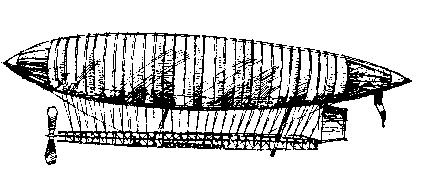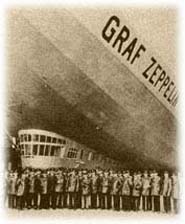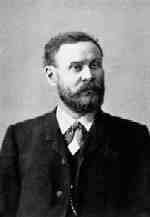 |
|||||
| Home | Research | For Teachers | HISTORY Level 1 Level 2 Level 3 |
PRINCIPLES Level 1 Level 2 Level 3 |
CAREER Level 1 Level 2 Level 3 |
| Gallery | Hot Links | What's New! | |||
| Web Administration and Tools | |||||
 |
|||||
| Home | Research | For Teachers | HISTORY Level 1 Level 2 Level 3 |
PRINCIPLES Level 1 Level 2 Level 3 |
CAREER Level 1 Level 2 Level 3 |
| Gallery | Hot Links | What's New! | |||
| Web Administration and Tools | |||||
![]()
The first journey made by man in a balloon occurred in November 1783. The aerial journey was made over Paris by Jean Francois Pilatre de Rozier who was accompanied by his companion Marquis d'Arlandes whose job it was to stoke the brazier which produced the hot air to keep the balloon aloft.
|
Montgolfier Brothers' Balloon |
The La France, built by Renard and Krebs in 1884, was the first airship which could be steered in any direction regardless of the wind. Its insufficient powerplant, electrically driven, had a speed of only 14 1/2 mph.
 |
| La France airship |
The Graf Zeppelin was the most successful airship ever built. It pioneered passenger travel over the Atlantic long before airplanes were capable of long range flight. Its first flight was in September 1928. The Zeppelin Company, a German firm, built a series of airships between 1900 and 1936 which made their own contribution to aviation history including aerial cruises and reconnaissance flights between Europe, North and South America. After nearly 10 decades of service the Zeppelin Company retired these airships from service.
|
 |
Graf Zeppelin (LZ-127) |
|
Sir George Cayley is known as the "Father of Aerial Navigation." In 1799 he designed the first airplane with wings, fuselage, tail unit and a means of propulsion. In 1804 he flew the first successful model airplane which had a kite-shaped wing mounted on a pole with a universally-jointed tail unit. The modern airplane has a similar configuration.
 |
| Cayley's first airplane |
Gliding by definition means to move smoothly, and continuously. As man watched birds such as the albatross and gull, he observed their ability to soar for long periods without the need to flap their wings. To some it was a mystery but to others who understood the movements of the air, its cooling and heating, it was an incentive to design a device, heavier than air, with no power source, which could move through the air like a bird. This device is known as a glider. One of the great pioneers of gliding was Otto Lilienthal. Although he was successful in pioneering the art of gliding, he lost control, crashed and died on a flight on August 9, 1896.
 |
 |
|
Otto Lilienthal |
Lilienthal's Biplane Glider |
|
Send all comments to ![]() aeromaster@eng.fiu.edu
aeromaster@eng.fiu.edu
© 1995-98 ALLSTAR Network. All rights reserved worldwide.
Updated: 23 Feb 1999